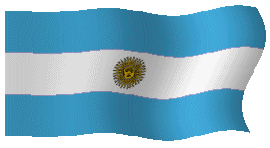
B"H
Jewish  Tours
Tours
 Buenos Aires, Argentina
Buenos Aires, Argentina
BRAZIL
Independent Brazil
Two years after Brazil declared its independence from
Portugal (1822) it adopted its first constitution. Roman Catholicism remained
the state religion, but the constitution proclaimed some tolerance of other
religions. After the proclamation of independence from Portugal and during the
period of monarchy in Brazilian history (1822–89), Brazil had two emperors,
Dom Pedro I and Dom Pedro II. The latter was interested in
Judaism, was a Hebraist, and maintained correspondence with illustrious Jews of
his time and had visited the Holy Land during one of his international voyages.
The second organized Jewish community in Brazilian history,
in modern times, was founded in Belém, capital of the State of Pará, in the
north, in 1840, made up of Jews who had come from Morocco. The immigrants were
attracted by
the wealth derived from the rubber economy. They established the first modern
synagogue in the country, Eshel Abraham, in 1823, and around 1826 the second
one, Shaar Hashamaim. The first synagogue followed the rites of Tanger and Tetuán
(which later became part of Spanish Morocco), and Shaar Hashamaim followed the
rites of Arab Morocco (later under French colonial rule, Algeria, and other
parts of North Africa. In 1842 a Jewish cemetery was founded in the same city.
Revival of the rubber industry between the end of the 19th century
and the beginning of the 20th attracted more immigrants. Immigrants
from Morocco formed small communities in other places in northern Brazil. There
were also small Moroccan nuclei in the Amazonas, another northern state,
attracted by the wealth of the rubber industry, in places such as Itacoatiara,
Cametá, Paratintins, Óbidos, Santarém, Humaitá, and others. Most of these
Jews mixed with the local population, giving origin to many local legends mixing
Judaism and Catholicism. By World War I, Belém's Sephardi
community, of Moroccan origin, had about 800 people.
Next
Page

 Tours
Tours Buenos Aires, Argentina
Buenos Aires, Argentina